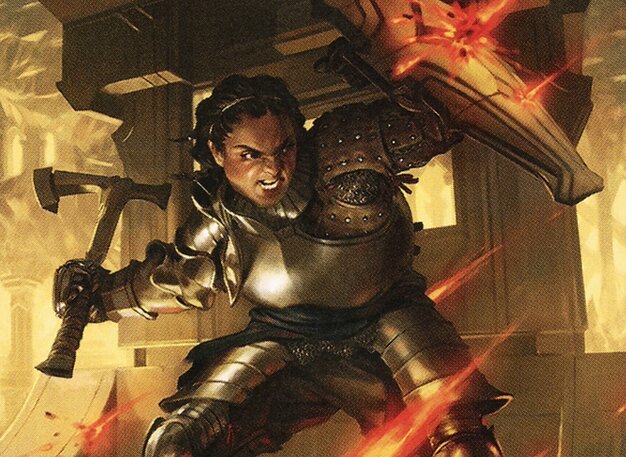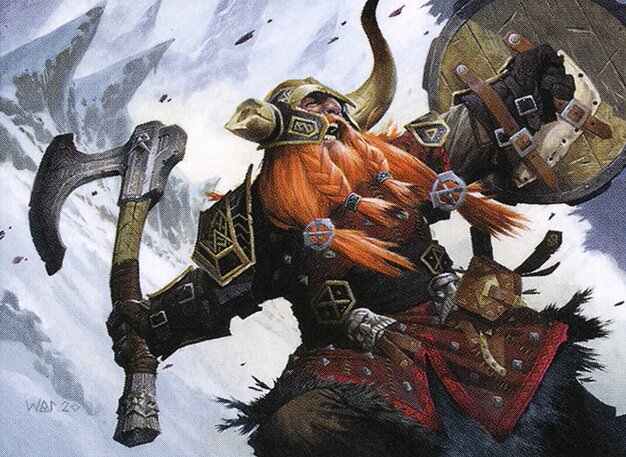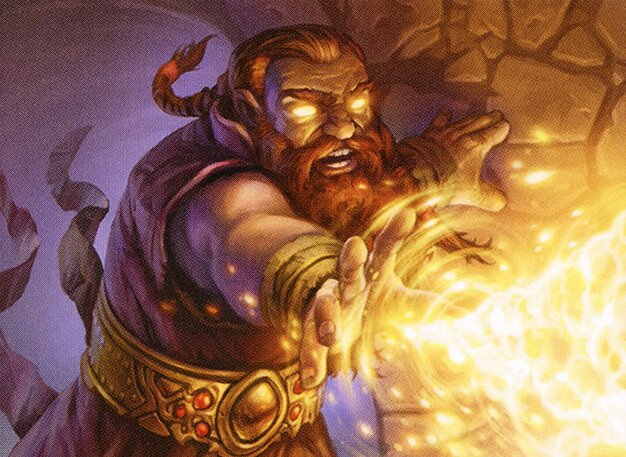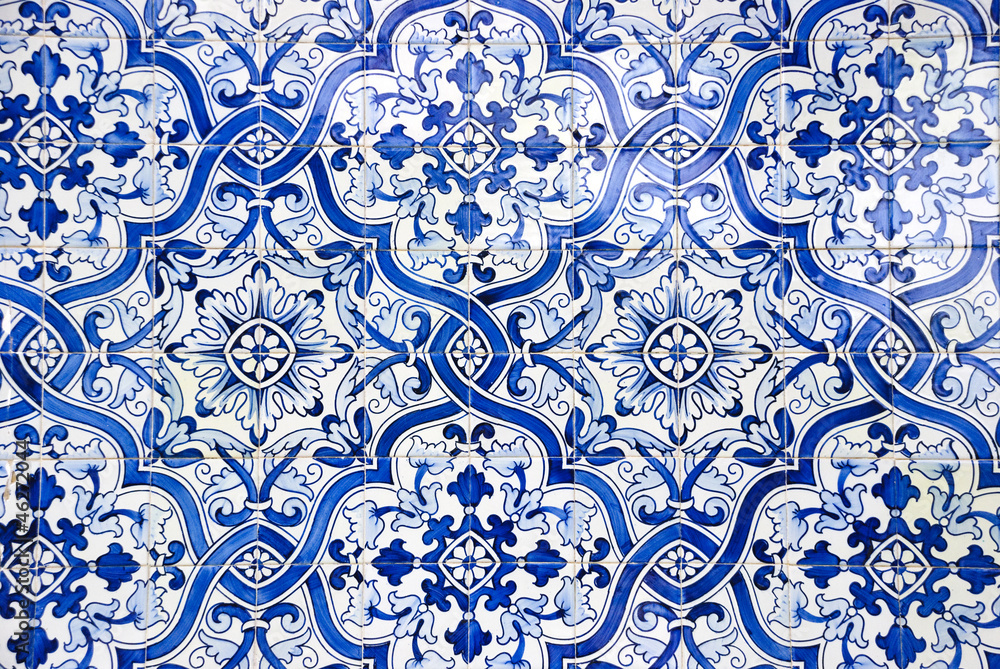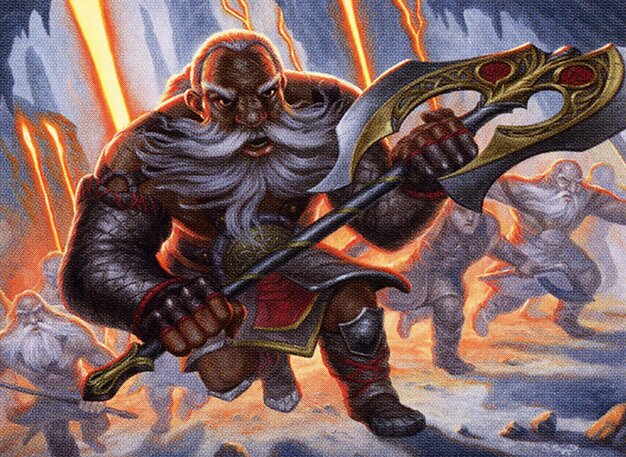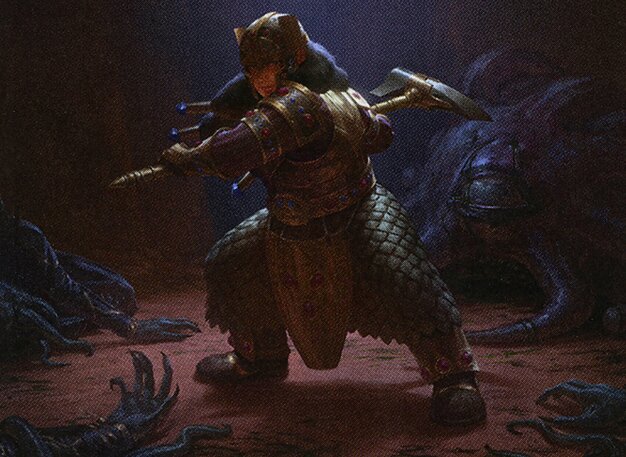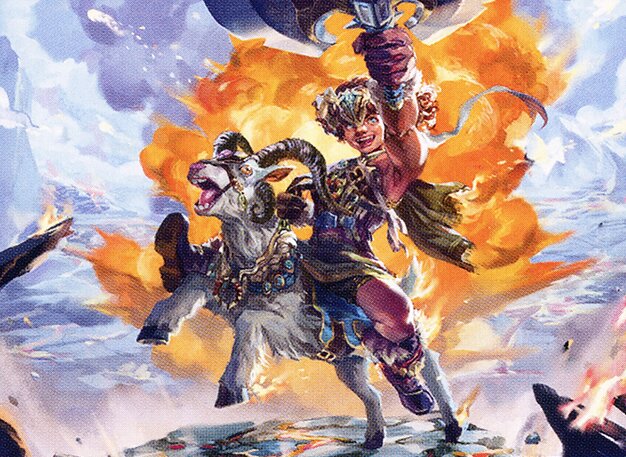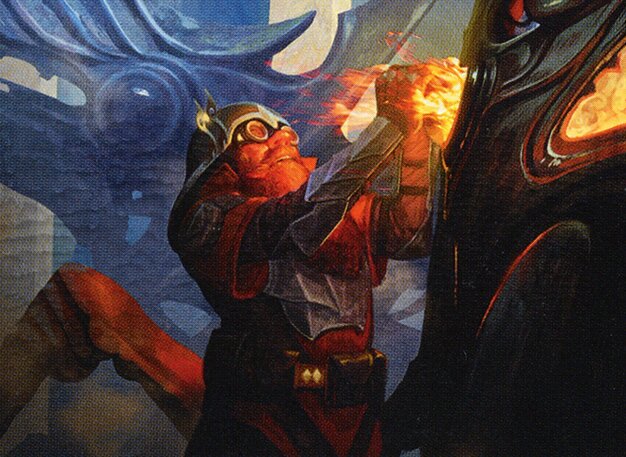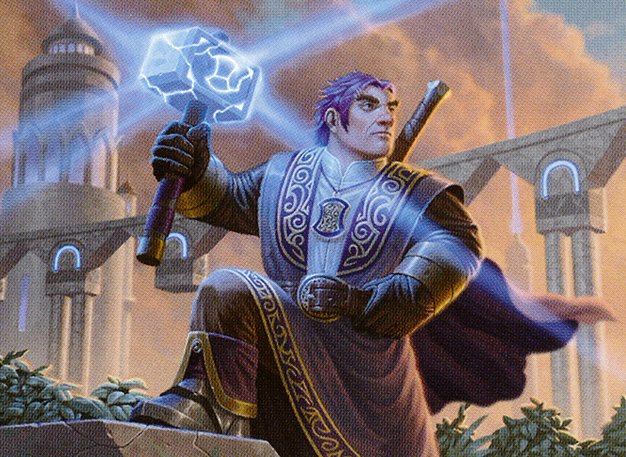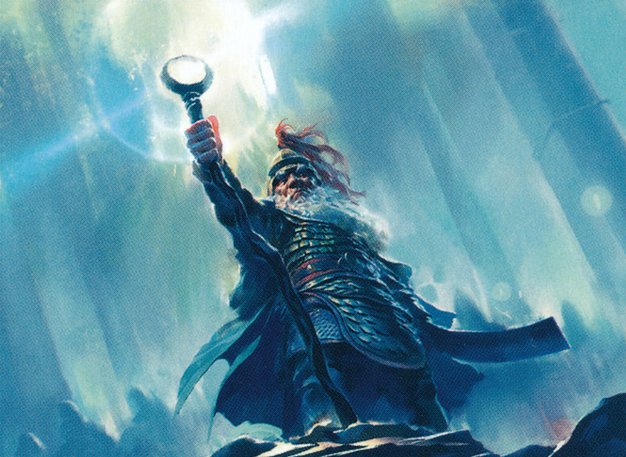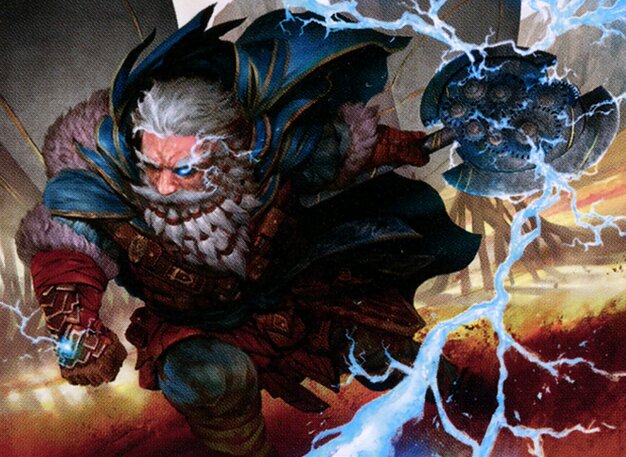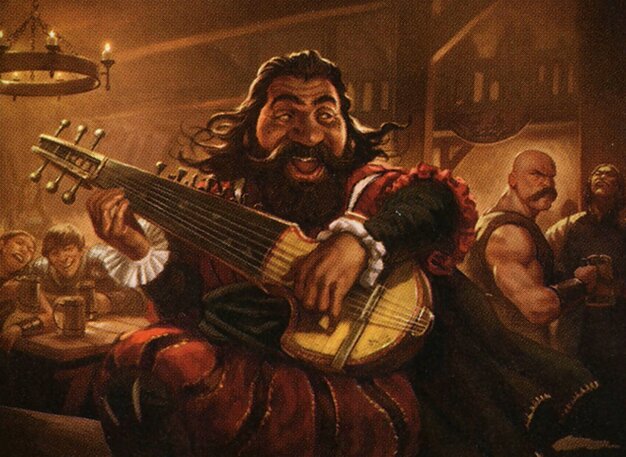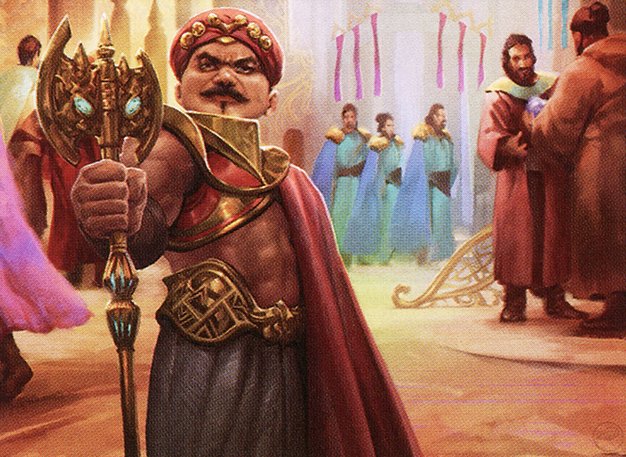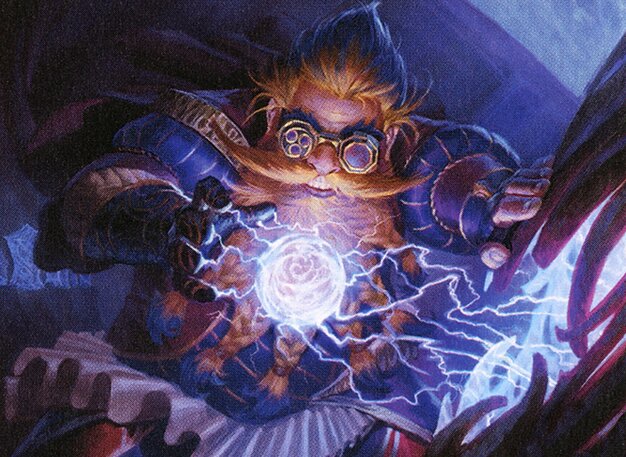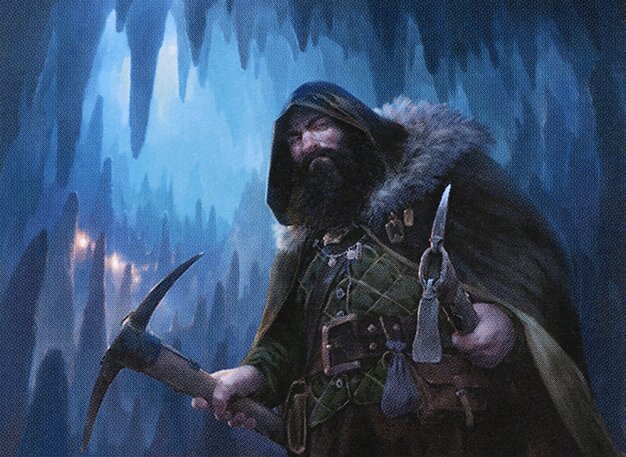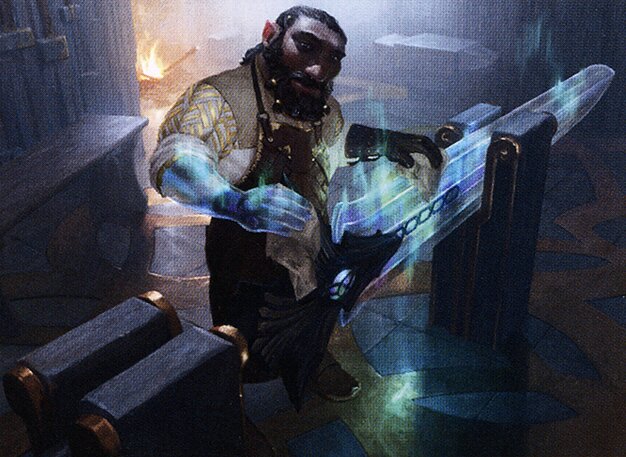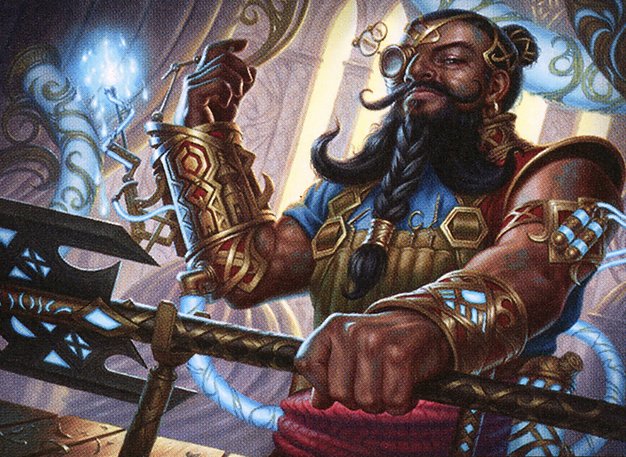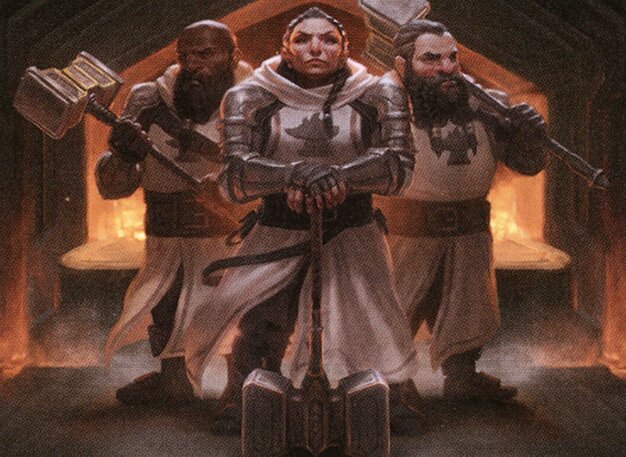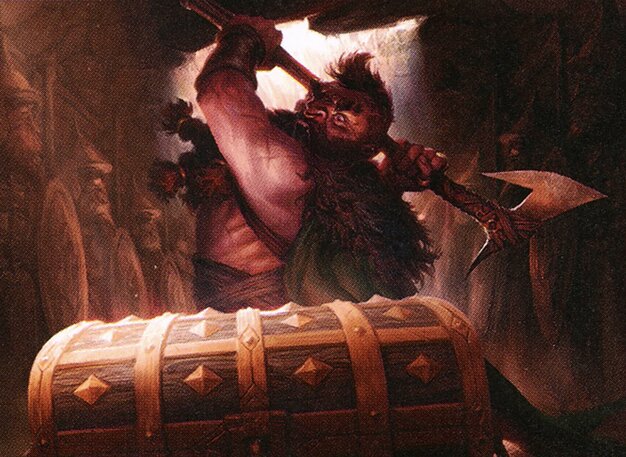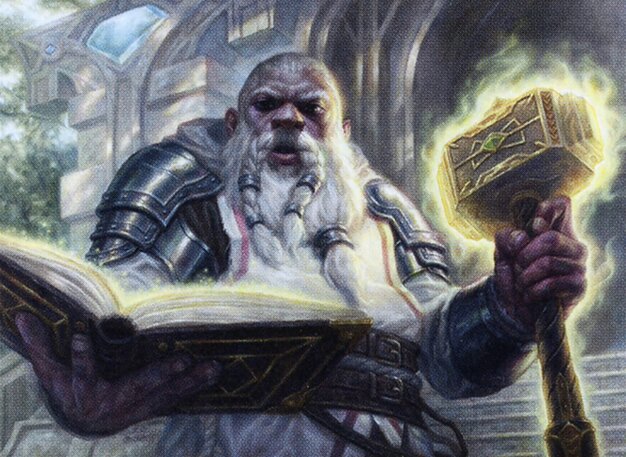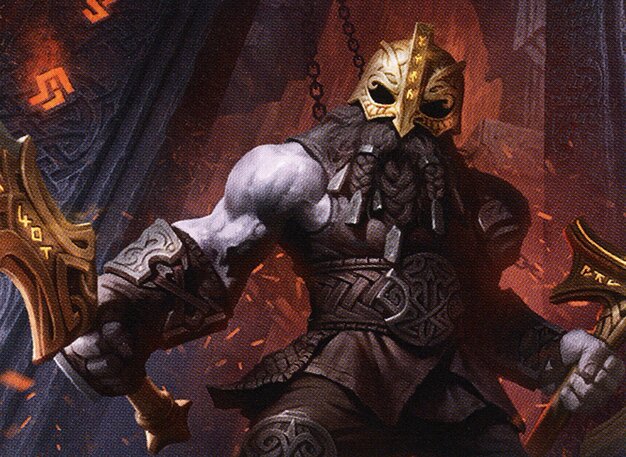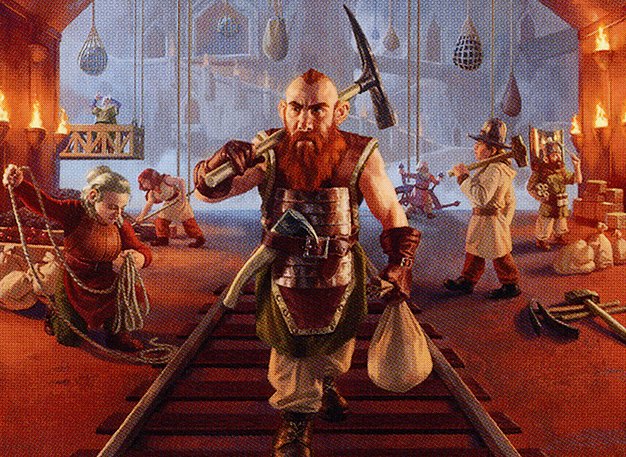Eco.Dw Dwarves - JulTob/DnD GitHub Wiki
The dwarves are envisioned through the lens of several major historical and cultural influences, particularly drawing inspiration from the Spanish Golden Age, the adventurous spirit of Portuguese maritime expansion, the artistic and intellectual explosion of the Italian Renaissance, and the resilience and ingenuity of civilizations like Mahuritania and Carthage. By blending these diverse influences, dwarves emerge as a multifaceted culture with a deep sense of tradition, artistry, military prowess, and exploration. This cultural amalgamation provides a rich tapestry for their clan dynamics, political alliances, and broader interactions with the game world, making them vividly engaging for players. The historical inspirations shape the dwarves into a society that embodies conquest, creativity, exploration, and resilience,.
⚒ ☭ ⛏ -
- Obsession with wealth, conquest, and military prowess.
- Dwarves are fierce warriors and skilled miners, constantly seeking wealth and glory.
-
- Dwarves are renowned warriors, with a strong martial tradition.
- Their clans maintain standing armies and are skilled in various forms of combat, particularly defensive warfare and siege tactics.
-
- Deeply religious
- With a strong social influence of the (Catholic) Church.
- With rituals and structures reminiscent of the grandeur of Spanish cathedrals.
- Deep Devotion
- A strong, organized religion with grand cathedrals and a hierarchy of clergy.
- Religious festivals and rituals play a significant role in their society.
- Strong devotion to their gods, with elaborate religious ceremonies.
-
- Religion plays a central role in dwarven society.
- They worship a pantheon of gods, with particular reverence for deities associated with earth, metalworking, and war.
-
- Their cities feature grand, ornately decorated temples.
- Religious festivals and ceremonies are major events, involving the entire community.
-
- Strong familial ties and clan structures.
- Strong Family Bonds: Family and clan are the cornerstones of dwarven society. Loyalty to one’s clan and family is paramount, and clan leaders hold significant power.
- With intricate heraldry and family traditions.
-
- Family and clan ties are paramount, with each clan having its own heraldry, intricate lineage, traditions, and ancestral halls.
-
- Each clan maintains its own holdings and territories, which include mines, forges, and fortresses.
-
- Known for their resilience and determination.
- Fiercely protective of their clan’s honor and reputation.
-
- Dwarfs have a similar drive for exploration and conquest, seeking out new territories and treasures.
- Similar to Spanish explorers, dwarves are driven to explore the underground realms and distant lands, seeking riches and glory.
-
- Expertise in metalwork, particularly in gold and silver, creating exquisite weapons, armor, and artifacts.
-
- Dwarves place immense value on gold and precious metals.
- Their mines are legendary, and they have perfected the art of metalworking, creating intricate and valuable items.
-
- Dwarfs revere ancient relics and artifacts, which are often adorned with gold and precious stones.
The influence of the Spanish Golden Age on dwarven culture manifests through their obsession with wealth and conquest. Dwarves are fierce warriors and skilled miners, with an insatiable hunger for gold reminiscent of the Spanish conquistadors. Their society is deeply infused with religious devotion, marked by grand temples and elaborate ceremonies akin to the grandeur of Spanish cathedrals. Religion forms the bedrock of their ethics and daily life.
Family and Clan loyalty is paramount. Each clan boasts intricate heraldry, grand ancestral halls, and a proud sense of history, which fosters fierce clan rivalries. Their stubborn pride defines them as both resilient defenders and shrewd negotiators. Dwarves maintain standing armies and excel in defensive combat, particularly focusing on siege warfare, a testament to their disciplined warrior culture.
-
Exploration
- Emphasis on exploration and naval prowess.
- Dwarves have a history of exploration and establishing trade routes and colonies, similar to the Portuguese explorers.
- A layer of adventurous spirit into their culture.
-
Trade and Commerce
- Strong trading networks and mercantile success.
-
Cultural Exchange
- Openness to new ideas and cultures through exploration.
- Filtering through their own biases.
-
Naval Expertise
- Elements of shipbuilding and naval warfare, with dwarves being skilled sailors and navigators.
-
Maritime Ventures:
- Coastal dwarven cities have a strong tradition of seafaring and trade, influenced by the Portuguese Age of Discovery.
- They build robust ships and explore distant lands.
-
Rich Cuisine
- Dwarven cuisine is diverse and flavorful, incorporating spices and ingredients from across their trade routes.
- They have a tradition of elaborate feasts and celebrations.
- As poisonous resistant, their spices and liquors are seen as extremely strong.
The Portuguese Age of Discovery imbues these dwarves with a spirit of exploration and commerce. They look outward to distant lands, driven by curiosity and opportunity. These dwarves are skilled navigators and shipbuilders, often settling in coastal regions where they build sturdy ships and venture into the unknown. Their maritime ventures lead to the establishment of trade routes and colonies, fostering cultural exchange with foreign societies.
Their cuisine reflects the diversity of their expeditions, featuring spices and ingredients from far-off regions. Elaborate feasts and celebrations showcase their rich tradition of indulging in the fruits of exploration, symbolizing both abundance and the interconnectedness of their trade networks.
-
Art and Architecture
- Influence of Renaissance art, sculpture, and architecture.
- Dwarves are master builders and artists, creating grand halls and intricate carvings.
- Dwarves are master craftsmen, producing exquisite art, sculpture, and monumental architecture.
- Their cities feature impressive stone buildings with detailed carvings and frescoes.
-
Political Intrigue
- Complex political structures, based on clans, and intrigue.
-
City-States
- Similar to the Italian city-states, dwarven clans have a strong sense of local pride and rivalry.
- Dwarven society is composed of independent city-states, each governed by powerful clans.
- These city-states often engage in political maneuvering and alliances, similar to Renaissance Italy.
-
Innovation
- Advances in science, engineering, and the arts.
- Emphasis on engineering and innovation, with dwarves being skilled inventors and craftsmen.
-
Patronage of the Arts
- Wealthy dwarves often patronize artists, resulting in a flourishing of arts and culture within their society.
The Italian Renaissance inspires dwarves to become patrons of art, architecture, and craftsmanship. They are master builders and sculptors, renowned for their grand halls decorated with intricate carvings and frescoes. Wealthy dwarves act as patrons of the arts, creating an environment that celebrates artists, inventors, and builders, much like the flourishing cities of Renaissance Italy.
Dwarven society mirrors the city-states of the Renaissance, with clans operating autonomously, resulting in complex political intrigue. Clans compete for power and influence, with alliances and rivalries shaping their social landscape. Advances in engineering and invention are highly prized, fueling both artistic achievements and practical technologies, such as improved siege weapons and architectural feats.
-
- Majestic Architecture:
- Dwarven buildings feature domes, arches, and intricate tilework, influenced by Ottoman (Damascus and Al-Andalusí) architecture.
- Their cities are known for their beauty and grandeur.
- Majestic Architecture:
-
- Public baths and lush gardens are common in dwarven cities, serving as places of relaxation and socialization.
-
- Elite Guards
- Similar to the Janissaries, dwarves have elite military units known for their discipline and effectiveness.
- These units are often composed of the best warriors from each clan.
- Elite Guards
The influence of the Ottoman Empire introduces majestic elements into dwarven architecture, with buildings featuring domes, arches, and intricate tilework. Public baths and lush gardens are social hubs, contributing to a sophisticated urban lifestyle. Their elite military units are comparable to the Janissaries, emphasizing discipline, skill, and effective combat strategies that make dwarven forces formidable.
-
- Dwarves embrace elaborate decoration and grand architecture.
- Their fortresses and palaces are adorned with mosaic floors and inlays of precious stones, combining practicality with intricate artistry.
- The dwarves' grand halls and fortresses often feature mosaic floors that include complex geometric shapes and vivid color schemes.
-
- Dwarves are esteemed jewelers and gemcutters, with an eye for producing stunning works that blend beauty and utility.
-
- A culture of religious tolerance and cultural diversity, as long as you worship some god, they are happy to gain their favours.
- Their cities are bustling and cosmopolitan, featuring expansive gardens, intricate mosaics, and vibrant cultural exchanges.
- Festivals are elaborate affairs, full of music, dance, and oral storytelling that celebrate their rich heritage and diverse influences.
-
Dwarven cities in desert regions are constructed around key water sources.
-
These oasis cities combine defensive architecture with lush, concealed gardens, showcasing their mastery of both survival and aesthetics in harsh environments.
-
Underground levels and air-towers keep temperatures under control, allowing for cities in the hardest of environments.
-
- Dwarves worship a wide pantheon of gods, each representing different aspects of life, craftsmanship, war, and nature.
- They believe in honoring as many deities as possible to seek favor and protection.
-
- Their cities are filled with shrines and temples dedicated to various gods.
- Each clan might have a patron deity, but all gods are respected and worshipped.
-
- Dwarves undertake pilgrimages to holy sites, such as ancient temples, sacred mines, and mountaintop shrines.
- These journeys are both spiritual and physical tests.
-
- Seeking favor from multiple gods, dwarves perform various rituals and offer prayers to ensure success in their endeavors.
- Temples are bustling centers of activity, with priests conducting daily rites.
-
-
Festival of the Forge:
- A grand celebration of craftsmanship and metalworking, where dwarves showcase their best work and engage in friendly competitions. The festival includes feasts, music, and fireworks.
-
Ancestor Day
- A day to honor and commune with their ancestors, involving rituals, offerings, and oral storytelling.
- Families gather at ancestral tombs to pay their respects and seek blessings.
-
Festival of the Forge:
-
-
Epic Sagas:
- Dwarves have a rich tradition of epic poetry and sagas that recount their history, legendary heroes, and battles.
- These stories are passed down orally and pictured in carvings and mosaics.
-
Intricate Art
- Their art features detailed mosaics, metalwork, and sculptures that tell stories and depict important events.
- These pieces often incorporate magical elements, making them both beautiful and functional.
-
Epic Sagas:
-
- Family and clan loyalty are paramount.
- Clans are large extended families that support each other in times of need and compete for prestige and honor.
-
- Each city is governed by a council of Elders from each clan, who make decisions on behalf of their clan, ensuring wisdom and experience guide their actions.
-
- Dwarven warriors are elite and highly disciplined, often forming specialized units like the Carthagenian legions.
- They are known for their mastery of defensive tactics and superior armor.
-
- Dwarves excel in engineering, creating siege engines, fortifications, and complex machinery that give them an edge in warfare.
-
- Dwarven society is governed by a strict code of laws that are known and respected by all.
- Justice is swift and fair, often involving trials by peers or Elders.
-
- In some cases, disputes are settled through formal duels, overseen by neutral parties to ensure fairness.
-
- Dwarven society is organized into various guilds based on different crafts and trades.
- Each guild holds significant power and influence, often funded by wealthy patrons.
-
- Creating a masterpiece is a rite of passage for dwarves.
- These works of art, armor, weapons, or jewelry are highly valued and displayed with pride.
Guilds are at the heart of dwarven culture, each guild focusing on mastering a particular craft: whether smithing, masonry, carpentry, gem cutting, or even battle itself. Guilds are open centers of learning, economic power, and social influence. Creating a masterpiece is seen as a rite of passage, establishing a dwarf's skill and reputation. These works are displayed proudly, symbolizing both individual achievement and guild prestige.
-### Fortified Cities - Dwarven cities are built to protect from the elements, withstand sieges, with thick walls, under mountains, and holding complex defensive systems. - These cities are also aesthetically pleasing, with intricate carvings, mosaics, and grand structures.
-
- Extensive underground tunnels and networks connect different dwarven cities, allowing for secret travel and trade routes that are well-protected from invaders.
Dwarven cities serve as both fortresses and marvels of architecture. They feature thick defensive walls, underground bunkers, and grand structures that double as both bastions and cultural landmarks. Extensive underground networks connect different cities, facilitating trade, communication, and secure travel, enhancing their strategic resilience.
-
- Like the Portuguese explorers, dwarves are known for their adventurous spirit.
- They explore deep into the earth and across distant lands, establishing colonies and seeking new resources.
-
- Dwarves establish trade routes and diplomatic relationships with other races, ensuring a steady flow of goods, knowledge, and wealth.
Mirroring Portuguese adventurers, dwarves possess a deep spirit of exploration. They delve into the earth's depths and journey to distant lands, establishing colonial outposts that grow into thriving settlements. These fortified colonies serve as extensions of their homeland, promoting expansion and resource acquisition.
Dwarves are famed for their elite warriors, organized into specialized units resembling Roman legions. Their defensive tactics are second to none, focusing on heavy armor and highly disciplined formations. An engineering corps works alongside the military, providing siege engines and fortifications that offer a decisive advantage in warfare.
🎉 Festivals and Celebrations
-
- Regular festivals celebrate their gods, crafts, and historical victories.
- These festivals include grand feasts, music, dancing, and oral storytelling from the Elders.
-
- After successful battles or explorations, dwarves hold elaborate celebrations to honor their heroes and the gods.
Numerous festivals mark the dwarven calendar, celebrating gods, craftsmanship, and historic victories. These events are characterized by feasts, music, dancing, and oral storytelling from The Elders. Victory celebrations are particularly grand, honoring the bravery of warriors and invoking divine favor for future endeavors.
Dwarven society is governed by codified laws, which are well-respected and strictly enforced. Justice is often administered through trials by peers or occasionally through judicial duels. Each clan is led by a Senate of Elders, ensuring decisions are guided by experience, tradition, and collective wisdom.
- Dwarves are masters of alchemical transmutation, capable of transforming base metals into gold and crafting legendary alloys with unique properties. This ties into their obsession with gold and wealth.
Dwarves are unparalleled in alchemy and metallurgy, producing legendary items. Their skill in transmutation and alloying reflects their cultural fascination with gold and precious materials. Enchanted items often incorporate cultural symbols, granting both mystical power and cultural identity to their creations.
-
- Dwarves create alloys that can heal themselves and adapt to different forms.
- This living metal is used in armor and constructs, making them nearly indestructible.
-
- They craft items from enchanted gold that have unique magical properties.
-
- Dwarven clerics draw power from a pantheon of gods, invoking blessings, protection, and divine wrath.
- They perform rituals to honor their ancestors and seek their guidance.
-
- They can commune with ancestral spirits for wisdom and aid in battle, and their tombs and temples are places of power where these spirits dwell.
- Dwarves can manipulate the earth and stone, shaping their environments to create fortresses, tunnels, and cities. This magic allows them to build grand structures and navigate underground realms.
- Seismic Control
- They can cause localized earthquakes or stabilize the ground to prevent natural disasters, providing both offensive and defensive capabilities.
Geomancy forms the foundation of dwarven magical practice, allowing manipulation of earth and stone to craft fortresses, tunnels, and cities. This power also serves a military purpose, with dwarves able to trigger localized earthquakes or stabilize the ground as needed, providing both offensive and defensive capabilities.
Dwarves employ two main forms of magic: Calligraphic Magic and Geometric Magic.
Calligraphic Magic involves using the power of words to invoke blessings, protection, and divine intervention. It is tied to the belief that language itself holds mystical power, which, when used with clear intent, can alter reality.
Geometric Magic draws from the inherent mystical properties of sacred geometry. By employing precise shapes and patterns, dwarves manipulate elemental forces and enhance physical structures, such as fortresses or weapons.
These systems can be combined for greater effect. A Blessed Fortress, for example, might feature geometric designs to enhance structural integrity alongside calligraphic inscriptions that provide divine protection, making it nearly impregnable.
-
-
- The magic system is based on the belief that words have inherent power.
- By carefully crafting and speaking these words, dwarves can manipulate reality.
-
- The effectiveness of the magic depends on the caster’s intention and clarity of purpose.
- The more focused and sincere the intent, the more powerful the spell.
-
- They inscribe runes and alchemical symbols on weapons, armor, and buildings.
-
-
- ### Beautiful Calligraphy
- Magical scripts are inscribed in beautiful, flowing calligraphy.
- This script combines elements of various cultural influences, creating a unique and elaborate style.
- ### Beautiful Calligraphy
-
- Weapons, armor, and buildings are engraved with these magical scripts.
- Each engraving is a work of art, designed to invoke specific powers and protections.
-
-
- Images of Dwarfs are reserved to tombs and funerary contexts.
- Instead of images, dwarven magic focuses on the written word.
- Words and abstract forms are used to convey meaning and invoke power.
-
-
-
-
Elemental Commandd
- Words that command the elements (fire, water, earth, air) are used to perform elemental magic.
- For example, a sword engraved with the word for “fire” can burst into flames when activated.
-
Protection and Healing
- Scripts for protection and healing are inscribed on armor, shields, and amulets.
- These words create barriers against harm or accelerate the healing process when activated.
-
Enhancement and Strength
- Words that enhance physical abilities or strengthen materials are used in crafting.
- For instance, an armor piece with the word for “strength” might increase the wearer’s physical power.
-
Elemental Commandd
-
-
- Spoken Activation
- To activate the magic, the user must speak the corresponding word with intention.
- The inscriptions illuminate, and the magic takes effect.
- Spoken Activation
-
- Some engravings provide a continuous effect, requiring only periodic reinforcement through rituals or re-inscription.
-
- Master Artisans
- Skilled artisans and scribes are revered for their ability to craft these inscriptions. The process involves both artistic skill and magical knowledge.
- Ritualistic Crafting
- The creation of magical items involves rituals to imbue the inscriptions with power. This often includes prayers, offerings, and the use of special materials.
- Master Artisans
-
-
-
Scripted Walls and Floors
- Temples and holy sites are adorned with calligraphic scripts.
- These scripts include prayers, hymns, and divine names, making the entire structure a conduit for divine power.
-
Scripted Walls and Floors
-
- Important public buildings and monuments are inscribed with words of protection, prosperity, and guidance.
-
-
Family Crests
- Each clan has a unique crest or motto inscribed in calligraphy, symbolizing their heritage and values.
- These are prominently displayed in homes and on personal items.
-
Clan Heirlooms
- Heirlooms passed down through generations are inscribed with powerful scripts, preserving the clan’s history and protecting its members.
-
Family Crests
-
- Ceremonial Inscriptions: During festivals and important ceremonies, temporary inscriptions are created on banners, garments, and even on the ground.
- These enhance the celebratory atmosphere and invoke blessings.
-
- Performances involving the recitation of powerful words and the illumination of inscriptions are common.
- These rituals reinforce community bonds and collective identity.
-
- Flameblade Sword:
- A finely crafted sword with the word for "$\color{red}fire$” inscribed along the blade in glowing calligraphy.
- When the word is spoken, the blade bursts into flames, dealing additional fire damage.
- Guardian Shield:
- A large shield inscribed with words of protection and resilience.
- The inscriptions glow when activated, creating a protective barrier that absorbs incoming attacks.
- Healing Amulet:
- An amulet inscribed with words of healing and vitality.
- When the activation word is spoken, the amulet emits a soothing light that heals wounds and restores health.
- Fortress Gates
- The massive gates of a dwarven fortress, inscribed with words of warding and strength.
- The inscriptions glow when enemies approach, creating an impenetrable barrier.
Geometric Magic System
Core Principles
- Sacred Geometry:
- Inherent Power: Geometric shapes and patterns have inherent magical properties. These forms are believed to reflect the fundamental structure of the universe.
- Symmetry and Harmony: The effectiveness of geometric magic relies on perfect symmetry and harmony in the designs. The more precise and balanced the geometry, the stronger the magic.
- Patterns and Shapes:
- Common Shapes: Circles, triangles, hexagons, and other polygons are fundamental. Each shape has specific magical properties and uses.
- Complex Patterns: Interlocking and tessellated patterns, often seen in Islamic art and the Alhambra, are used to create powerful magical effects. These patterns can be inscribed on objects, drawn on surfaces, or even formed in three dimensions.
Practical Application
- Magical Arrays:
- Spell Circles: Circles are drawn on the ground or inscribed on objects to create spell arrays. Different shapes within the circle focus and direct magical energy.
- Glyphs and Sigils: Individual geometric shapes serve as glyphs or sigils that represent specific spells or magical effects. These can be combined into more complex patterns for greater power.
- Enchanted Objects:
- Geometric Weapons and Armor: Weapons and armor are decorated with geometric patterns that enhance their effectiveness. For example, a shield with a hexagonal pattern might provide superior protection.
- Artifacts and Tools: Everyday objects, like tools and utensils, are also inscribed with geometric patterns to improve their functionality and durability.
- Constructs and Structures:
- Architectural Magic: Buildings and fortifications are designed with geometric patterns that enhance their strength and stability. These patterns also serve to channel magical energy throughout the structure.
- Automata: Mechanical constructs are built using geometric principles, with patterns inscribed to control and animate them.
Cultural Integration
- Religious and Spiritual Practices:
- Temple Designs: Temples and holy sites are designed with intricate geometric patterns that enhance the spiritual energy of the space. These patterns are believed to connect the physical and divine realms.
- Meditative Patterns: Geometric patterns are used in meditation and prayer, helping dwarves to focus their minds and channel divine energy.
- Clan Symbols and Identities:
- Clan Insignias: Each clan has a unique geometric insignia that represents their heritage and values. These insignias are used in various forms, from banners to jewelry.
- Ancestral Patterns: Patterns passed down through generations are used to decorate clan holdings and personal items, reinforcing clan identity and continuity.
- Art and Craftsmanship:
- Mosaics and Frescoes: Public spaces and important buildings are adorned with mosaics and frescoes that feature geometric patterns. These works of art are not only beautiful but also imbued with magical properties.
- Textiles and Ceramics: Geometric patterns are woven into textiles and painted on ceramics, making everyday items both functional and magical.
Examples of Geometric Magic Items
- Hexagonal Shield:
- Description: A shield decorated with a tessellated hexagonal pattern. When activated, the pattern glows, and the shield provides enhanced protection and reflects magical attacks.
- Usage: Used by defenders and frontline warriors in battle, especially effective against magical foes.
- Triangular Amulet:
- Description: An amulet with an intricate triangular pattern inscribed on its surface. The pattern focuses the wearer’s magical energy, increasing the potency of their spells.
- Usage: Worn by mages and clerics to enhance their spellcasting abilities.
- Geometric Staff:
- Description: A staff engraved with a series of interlocking geometric patterns. The staff channels and amplifies magical energy, allowing the caster to perform powerful spells.
- Usage: Carried by powerful wizards and sorcerers, used in both combat and ritual magic.
- Patterned Gateway:
- Description: A large gateway inscribed with complex geometric patterns. When activated, the gateway opens a portal to another location or dimension.
- Usage: Used to create portals for transportation and exploration, often guarded by powerful wards.
Integration with Calligraphic Magic
- Combined Arrays:
- Word and Shape: Magical circles and arrays can combine both calligraphic scripts and geometric patterns, enhancing the power and versatility of the spells.
- Dynamic Activation: The activation of these combined arrays might involve both speaking a word of power and tracing a shape in the air or on the ground.
- Hybrid Artifacts:
- Inscribed Weapons: Weapons can bear both calligraphic inscriptions and geometric patterns, making them incredibly powerful and versatile. For example, a sword might have a geometric pattern for strength and a calligraphic inscription for elemental magic.
- Enchanted Armor: Armor pieces decorated with both systems provide superior protection and magical resistance, adapting to different threats as needed.
- Rituals and Ceremonies:
- Complex Rituals: Major rituals might involve drawing large geometric patterns on the ground, inscribing calligraphic prayers within the shapes, and performing a coordinated activation through speech and movement.
- Ceremonial Spaces: Temples and ceremonial spaces are designed to incorporate both systems, with calligraphic murals and geometric floor designs creating a harmonious and powerful environment.
Calligraphic Magic System
Focus: Intentionality and Divine Power
- Core Principles:
- Power of Words: The calligraphic magic system is based on the belief that words have inherent power. By carefully crafting and speaking these words, dwarves can invoke divine favor and manipulate reality.
- Divine Connection: This system involves invoking the names of gods, prayers, and holy texts to draw on divine power. The intention behind the words is crucial, and the caster’s faith and sincerity enhance the magic’s potency.
- Applications:
- Blessings and Curses: Inscribing holy texts or the names of gods on objects or in specific locations to bless or curse them. For example, a sword with a blessing inscription might deal extra damage to evil creatures.
- Healing and Protection: Using calligraphy to create talismans, amulets, and charms that offer healing, protection, and divine favor. These items might glow or emit a comforting aura when activated.
- Rituals and Ceremonies: Performing elaborate rituals that involve inscribing prayers and divine names in specific patterns, then speaking the words to activate the magic. These rituals can call down divine intervention, sanctify places, or empower individuals.
Geometric Magic System
Focus: Passive and Elemental Forces
- Core Principles:
- Sacred Geometry: Geometric shapes and patterns have inherent magical properties. These forms are believed to reflect the fundamental structure of the universe and channel elemental forces.
- Symmetry and Harmony: The effectiveness of geometric magic relies on perfect symmetry and balance in the designs. The more precise and harmonious the geometry, the stronger the magic.
- Applications:
- Elemental Control: Using geometric patterns to harness and manipulate elemental forces like fire, water, earth, and air. For example, a shield with a hexagonal pattern might provide enhanced protection against fire.
- Structural Enhancements: Integrating geometric patterns into buildings, fortifications, and everyday objects to increase their durability, stability, and functionality. These patterns might subtly glow or shimmer when active.
- Automata and Constructs: Creating mechanical constructs and automata that are powered and controlled by geometric patterns. These creations can perform tasks, protect areas, or serve in battle.
Mathematical Magic System
Core Principles
- Numerology:
* Mystical Numbers: Certain numbers are believed to hold special power and significance. Numerology involves using these numbers to create and enhance spells, artifacts, and rituals.
* Prime Numbers and Sacred Sequences: Prime numbers, Fibonacci sequences, and other mathematically significant series are used in magic for their inherent properties.
- Mathematical Formulas and Algorithms:
- Magic Algorithms: Spells are crafted using complex algorithms. These algorithms define the steps and processes to achieve the desired magical effect, much like a computer program.
- Formulas and Equations: Mathematical formulas and equations are used to represent and manipulate magical forces. Precision in these calculations is key to the success of the spell.
- Geometric Shapes and Transformations:
- Sacred Geometry: Geometric shapes and patterns, such as circles, triangles, and fractals, are used to channel and control magical energy. Transformations and tessellations play a significant role.
- Shape Manipulation: Magic allows the transformation of shapes and forms, both physical and abstract. This can include altering the structure of objects or even creating new shapes from pure magical energy.
- Linguistic Constructs and Symbolic Logic:
- Magic Syntax: Spells are written in a precise magical language that follows strict syntactical rules. This language combines words, symbols, and numbers to create powerful incantations.
- Symbolic Representation: Magical effects are encoded in symbols and glyphs that represent various mathematical and logical concepts. These symbols can be inscribed on objects, drawn in the air, or written in spellbooks.
Applications
- Spellcrafting:
- Algorithmic Spells: Spells are crafted using detailed algorithms that specify the sequence of magical operations. For example, a spell to create fire might include steps to gather energy, convert it to heat, and sustain the flame.
- Geometric Arrays: Spellcasters draw geometric patterns on the ground or in the air to form spell arrays. These arrays focus and amplify the magical energy, directing it to the desired effect.
- Enchanted Objects:
- Mathematical Artifacts: Objects are enchanted using mathematical formulas and geometric patterns. For instance, a sword might be inscribed with a fractal pattern that increases its cutting power exponentially.
- Adaptive Tools: Tools and devices are enchanted to adapt their shape and function based on mathematical algorithms. A pickaxe might change its form to optimize mining efficiency.
- Constructs and Automatons:
- Programmable Golems: Golems and other constructs are controlled by embedded algorithms. These magical programs define their behavior, allowing them to perform complex tasks autonomously.
- Geometric Guardians: Constructs are designed with geometric precision, making them highly efficient and resilient. These guardians can change their form based on situational requirements.
Cultural Integration
- Education and Scholarship:
- Mathematical Academies: Dwarves establish academies where young dwarves learn mathematics, geometry, and magic. These institutions produce scholars who advance the understanding and application of mathematical magic.
- Master Artisans: Skilled artisans and enchanters are revered for their ability to integrate mathematical principles into their work. They create masterpieces that combine beauty, functionality, and magical power.
- Rituals and Ceremonies:
- Ritual Calculations: Major rituals involve complex calculations and the drawing of intricate geometric patterns. Participants chant mathematical sequences and incantations to invoke powerful magical effects.
- Ceremonial Artifacts: Ritual items are crafted with mathematical precision, enhancing their magical properties. These artifacts are used in important ceremonies and public works.
- Architecture and Engineering:
- Geometric Architecture: Dwarven buildings and fortifications are designed using principles of sacred geometry. These structures are not only aesthetically pleasing but also imbued with protective and enhancing magic.
- Mathematical Bridges: Bridges, tunnels, and other infrastructure are constructed with mathematical exactitude, making them incredibly strong and durable.
Integration and Complementation
Combined Use:
- Synergistic Effects: Combining calligraphic and geometric magic can create powerful synergistic effects. For example, a weapon inscribed with both divine names and geometric patterns might be able to cut through magical barriers or deal extra damage to elementals.
- Ritual Spaces: Designing ritual spaces that incorporate both systems. Geometric patterns on the floor and walls can create a stable environment for rituals, while calligraphic inscriptions focus and direct the divine energy.
Examples:
- Blessed Fortress:
- Description: A dwarven fortress designed with geometric patterns for structural integrity and inscribed with calligraphic blessings for divine protection. The walls are nearly indestructible, and the fortress is protected from magical attacks.
- Activation: During a siege, the geometric patterns glow with elemental energy, while the calligraphic inscriptions emit a divine light, repelling invaders and shielding the inhabitants.
- Elemental Hammer:
- Description: A war hammer inscribed with geometric patterns that channel earth and fire elements, and calligraphic inscriptions invoking the strength of a dwarven god of war. The hammer can cause tremors and ignite targets upon impact.
- Activation: When the wielder speaks the activation word, the hammer’s head glows with fiery runes, and it gains the ability to smash through stone and metal with ease.
- Healing Sanctuary:
- Description: A healing sanctuary where the floors and walls are adorned with geometric patterns that channel restorative elemental forces, and calligraphic inscriptions that invoke healing and protection from a dwarven deity of health.
- Function: Visitors to the sanctuary experience accelerated healing and protection from disease. The patterns and inscriptions glow softly, creating a calming and restorative atmosphere.
- Guardian Automaton:
- Description: A mechanical guardian inscribed with geometric patterns for movement and durability, and calligraphic scripts for obedience and divine protection. The automaton serves as a sentinel, defending key locations.
- Activation: The automaton activates when a specific phrase is spoken, the geometric patterns light up, providing it with enhanced strength and agility, while the calligraphic inscriptions ensure its loyalty and protection against dark magic.
Cultural Practices and Integration
- Religious Ceremonies:
- Divine and Elemental Harmony: Ceremonies often involve both calligraphic prayers and geometric arrangements. For example, a fertility ritual might be performed in a garden laid out in geometric patterns, with calligraphic inscriptions on stones around the perimeter.
- Ritual Items: Items used in rituals, such as chalices, altars, and vestments, are decorated with both systems, enhancing their spiritual and magical potency.
- Educational Institutions:
- Dual Training: Young dwarves are taught both systems in their educational institutions. They learn the art of calligraphy to harness divine power and the principles of geometry to control elemental forces.
- Apprenticeships: Apprenticeships involve working under master artisans and scribes who specialize in integrating both systems, ensuring that knowledge is passed down through generations.
- Art and Architecture:
- Integrated Designs: Public buildings, temples, and fortresses feature integrated designs where geometric patterns and calligraphic inscriptions work together to create both aesthetic beauty and magical functionality.
- Cultural Symbolism: The combination of these systems becomes a cultural symbol of dwarven identity, representing their mastery of both divine and elemental forces.
-
- Dwarves excel in creating mechanical constructs and automata, blending magic and engineering. These constructs serve various purposes, from labor to defense.
-
- They incorporate magical elements into their engineering projects, such as bridges that repair themselves or buildings that adapt to environmental changes.
-
- Using geomancy and engineering, dwarves build floating citadels that serve as mobile fortresses and trade centers.
-
- Their subterranean cities are illuminated by enchanted crystals and feature vast halls supported by magically reinforced pillars.
- These cities are impregnable and self-sustaining.
By blending magic with engineering, dwarves create mechanical constructs and automata that fulfill a range of functions: from heavy labor to defense. These constructs are inscribed with runes, enhancing their capabilities and providing them with specific traits, such as heightened strength or autonomy.
-
- Magic is integrated into public infrastructure, such as enchanted aqueducts that provide fresh water, magical street lamps, and public baths with healing properties.
-
- Young dwarves are trained in both traditional crafts and magical arts, ensuring a well-rounded education.
- Guilds and clans have their own magical traditions, training, and magic schools.
Temples and holy sites are adorned with both calligraphic and geometric designs, blending divine invocation with elemental harmony. These places are not only centers of worship but also serve as hubs of magical energy, with inscriptions and patterns working together to create an atmosphere of reverence and power. Important public buildings and ceremonial spaces also feature this unique combination, underscoring the dwarves' mastery of magic and aesthetics.
-
- Dwarves establish extensive trade networks and alliances with other races, exchanging goods, knowledge, and magical items.
- Their cities are hubs of commerce, attracting merchants from all over the world.
-
- They send diplomats and envoys to maintain peaceful relations and negotiate treaties.
- These diplomats are skilled in both negotiation and subtle magic to influence outcomes.
-
- Dwarves form defensive alliances with neighboring kingdoms, ensuring mutual protection against common threats.
- Their fortresses are key strongholds in these alliances.
-
- Dwarven mercenaries are highly sought after for their skill and reliability.
- They often serve as elite units in foreign armies, bringing their advanced weaponry and tactics to bear.
Dwarves excel in diplomacy, establishing trade networks and forging defensive pacts with neighboring kingdoms and other races. Their cities often act as major commercial hubs, attracting merchants and fostering cross-cultural exchanges. They maintain alliances with magical creatures like Dao (earth elemental Genies), who assist in mining and construction, or Djinns. Griffons and hippogriffs are trained as mounts for their elite warriors, providing aerial mobility and adding a layer of tactical diversity.
-
- Dwarves establish outposts in resource-rich areas, securing valuable minerals and strategic locations. These outposts often grow into fortified settlements.
-
- Coastal dwarven cities build powerful navies to explore distant lands, protect trade routes, and establish colonies.
-
- Earth Elementals
- Dwarves often ally with earth elementals, using their power to aid in mining and construction.
- These elementals are also formidable defenders of dwarven realms.
- They usually come in contact with Earth Genies (Dao), both as allies and foes.
- Elemental Guardians
- Dwarves might ally with elemental creatures, using calligraphic scripts to bind and summon these beings for protection and assistance.
- Constructs
- Mechanical constructs and automata are inscribed with control words, allowing dwarves to animate and direct them.
- Earth Elementals
-
- Trained griffons and hippogriffs serve as mounts for elite dwarven warriors and messengers, providing them with mobility and aerial superiority.
-
- Dwarves have a long history of conflict with dragons, who covet the vast treasures of dwarven cities.
- These battles are legendary, and dragon-slaying is a prestigious feat.
-
- Their subterranean expansions often bring them into conflict with dark elves and other creatures of the Underdark.
- These skirmishes are brutal and ongoing.
The true origin of the dwarves has been buried deeper than their deepest mines, but echoes remain in the mountain halls and ancestral hymns sung in a tongue that rolls like stone and resounds like drums.
Where once they were cave bound masons and smiths, many have risen to the world stage as conquistadors, bankers, explorers, and titans of technomagical industry. Gold is sacred to them. Not just as currency, but as divine power, social bond, and magical conductor.
- Gold is a symbol for permanence: a metal that does not tarnish, that never fades.
- Religious relics, family heirlooms, and even contracts are sealed in gold.
- Gold is present in many alloys used for magic technology.
- Crystals and precious stones are used to store spells, channel magic, or power machines.
- Steam engines, gearworks, and artificery are common in dwarven cities.
- Magitech suits, alchemical furnaces, and railed fortresses are relics of the Guilded Era.
- A dwarf alone is a stone in a stream. A dwarf among kin is a mountain.
- Clans form around crafts, banks, ships, or expeditions, not always blood.
- Honor and reputation are the truest currencies.
No living Dwarves remember the Guilded Era. But they all know about it. A time when Dwarves colonized and ruled the world. The Dwarven empire was always shinning, as the sun always shinned on it. And so did Gold. Some say that all the gold of the world eventually belonged to the Empire. And some say that, because of it, still belongs to the dwarves. Some say it was enchanted, as all it's mechanical engines and magic was dependent on the sacred metal. But the Empire grew too big, too ambitious. And one day, without any alert or cry, the Great Mountain (the Dwarven Capital) vanished, and the empire fractured. Thousand of years passed, and clans found their niches, with every Dwarf marked by the ruins of the Empire.
- The most ancient dwarves, often mountain bound. Known for their Euskerric runes and long memory.
- Believe deeply in ancestral spirits and ritual fire rites.
- Isolationist, believing that the Old Ways of the Empire should be maintained.
- Sea roving dwarves with a pirate’s cunning and a merchant’s charm.
- Their ships run on steam, sails marked with magic tessellations, and wind spells.
- Bankers, architects, and arcanoengineers.
- Integrated into other cultures, as the dwarven diaspora forced them to find their destiny without the Empire.
- Speak in contracts and trade oaths. Many elves and humans trust them to mint currency.
- They whisper to stones and engrave their ancestors’ names on the inside of their shields.
- They pray by building offerings.
Dwarves believe each soul is forged from a metaphysical metal, shaped by the divine forge of the cosmos. These soul-metals determine a dwarf’s essence, destiny, and ideal role in society.
Gold-Souled – Leaders, sages, and visionaries.
- Born to inspire, guide, and bear the weight of decisions.
Silver-Souled – Guardians and judges.
- The shield of society, dedicated to justice, honor, and preservation.
Bronze-Souled – Crafters, traders, and builders.
- Their hands shape the world and sustain all others.
Iron-Souled – Wanderers, outliers, and philosophers.
- Enduring, questioning, and often misunderstood — Capable of becoming something truly unique.
"The gods placed gold in some hearts, silver in others, but even the humblest iron may become adamant through the forge of will."
-
Soul-testing rites:
- Adolescents undergo trials to reveal their dominant metal — Some carry this knowledge with pride, others resist it.
-
Symbolic metals:
- Armor and adornments often represent the soul-metal, though not always literally.
Dwarves respect all metals; variety is harmony, not hierarchy.
- A massive gear-engine sealed for generations begins to move—who built it? Why now?
- A forge-clan goes silent after a mysterious gem mine is opened.
- A dwarven pirate seeks to buy back her ancestral vault—but a demon made a prior claim.
- What kind of dwarf society is in play—mercantile, militant, monastic?
- How do their machines affect local magic and ecology?
- What was their role in colonizing (or liberating) a region?
Tagline: "We carve our names in stone, but it is gold that remembers."

